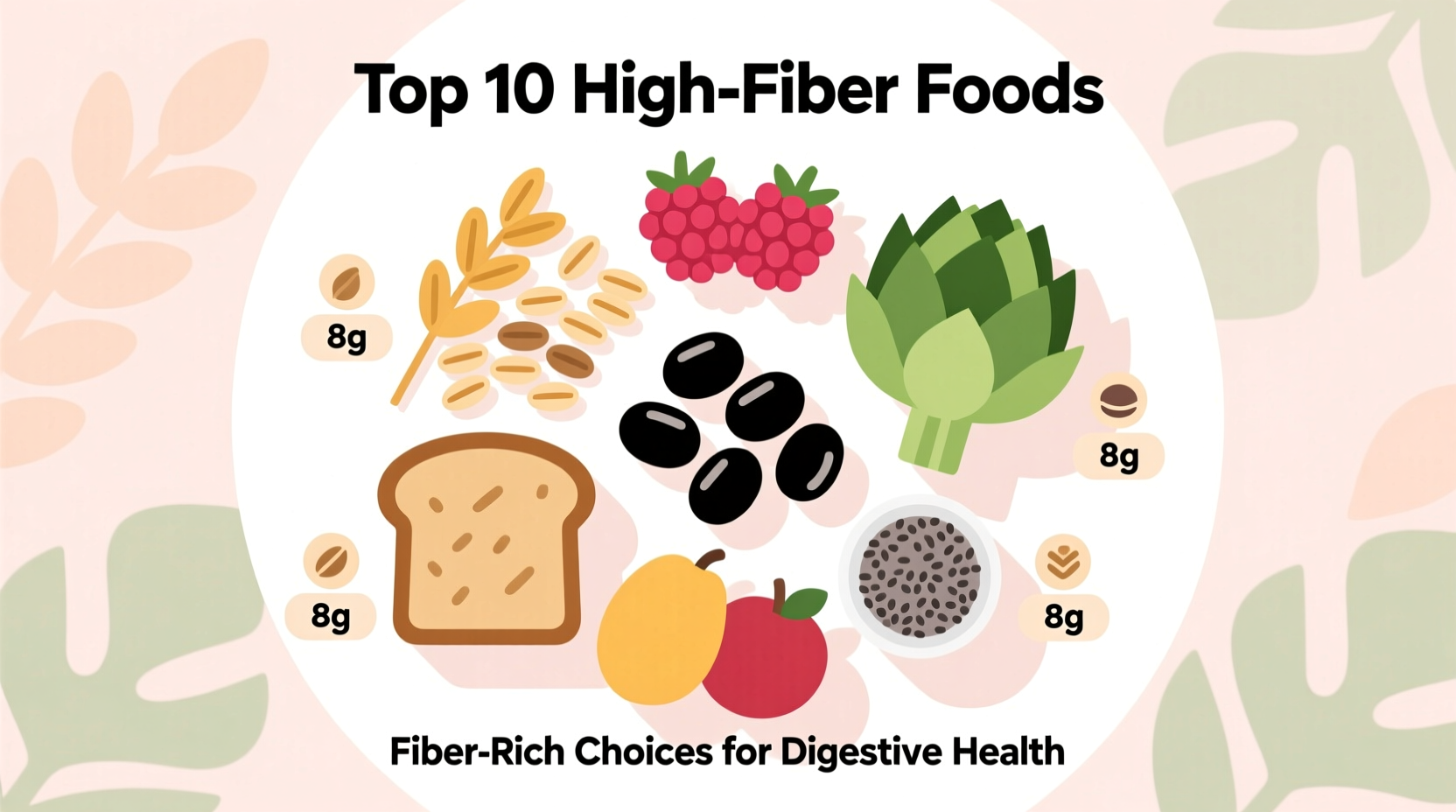Discover how to effortlessly boost your daily fiber intake with scientifically-backed food choices that deliver maximum nutritional benefits without digestive discomfort. This comprehensive guide reveals the most effective high-fiber foods ranked by nutritional density, practical integration strategies, and evidence-based consumption guidelines trusted by nutrition professionals.
Why Fiber Matters: Beyond Basic Digestion
Fiber isn't just about preventing constipation—it's a cornerstone of metabolic health. Research from the National Institutes of Health shows adequate fiber intake reduces cardiovascular disease risk by 30% and type 2 diabetes incidence by 27%. The dual action of soluble fiber (slowing glucose absorption) and insoluble fiber (promoting regularity) creates a powerful synergy for whole-body wellness.
Top High-Fiber Foods by Category
Fruits That Deliver Maximum Fiber Punch
While all fruits contain fiber, certain varieties offer exceptional concentrations. Raspberries lead with 8 grams per cup—more than double most berries. Pair them with chia seeds (10g per ounce) for a fiber powerhouse breakfast. Don't overlook underutilized options like guava (9g per fruit) and dried figs (12g per half-cup), which provide sustained energy without blood sugar spikes.
Vegetables: Nature's Fiber Powerhouses
Artichokes reign supreme with 10.3 grams per medium vegetable, followed closely by green peas (8.8g per cup). For everyday cooking, incorporate high-fiber vegetables like broccoli rabe (5.4g per cooked cup) and Brussels sprouts (6g per cooked cup). Roasting concentrates natural sugars while preserving fiber content—try Brussels sprouts with a sprinkle of flaxseeds (3g per tablespoon) for added crunch and nutrition.
| Food | Serving Size | Total Fiber (g) | Soluble/Insoluble Ratio |
|---|---|---|---|
| Chia Seeds | 1 ounce | 10.6 | 50/50 |
| Lentils | 1 cooked cup | 15.6 | 40/60 |
| Black Beans | 1 cooked cup | 15.0 | 35/65 |
| Artichoke | 1 medium | 10.3 | 45/55 |
| Raspberries | 1 cup | 8.0 | 30/70 |
The Legume Advantage: Fiber Champions You Should Know
Legumes represent the undisputed champions of dietary fiber. A single cup of cooked lentils delivers 15.6 grams—more than half the daily requirement for most adults. According to USDA FoodData Central analysis, legumes maintain their fiber content exceptionally well during cooking compared to many vegetables. For optimal digestion, gradually increase legume consumption while drinking adequate water, and consider using epazote (a traditional Mexican herb) to reduce gas production during digestion.
Smart Integration: Making Fiber Work for Your Lifestyle
Transitioning to a high-fiber diet requires strategic implementation to avoid discomfort. Start with these evidence-based approaches:
- Breakfast boost: Add 2 tablespoons of ground flaxseed (4g fiber) to your morning smoothie
- Lunch transformation: Replace half your ground meat with cooked lentils in tacos or spaghetti sauce
- Snack smarter: Choose an apple with almond butter (5g fiber) instead of processed snacks
- Dinner upgrade: Substitute white rice with cauliflower rice mixed with black beans
The American Heart Association emphasizes that spreading fiber intake throughout the day prevents digestive distress while maximizing nutrient absorption. Their clinical studies show consistent daily fiber consumption improves gut microbiome diversity within just two weeks.
Daily Fiber Requirements: Personalized Guidelines
Fiber needs vary by age and gender according to the National Academy of Medicine:
- Women under 50: 25g daily
- Men under 50: 38g daily
- Women over 50: 21g daily
- Men over 50: 30g daily
Most Americans consume only 15g daily—less than half the recommended amount. The Mayo Clinic notes that increasing fiber intake too rapidly can cause bloating and cramping. Their evidence-based protocol recommends adding just 5g of fiber weekly until reaching target goals while simultaneously increasing water consumption.

Avoiding Common Fiber Mistakes
Many people sabotage their fiber efforts through preventable errors:
- Hydration neglect: Fiber requires water to function properly—aim for 8 glasses daily
- Supplement overreliance: Whole foods provide additional nutrients beyond isolated fiber
- Processing pitfalls: Juicing removes valuable insoluble fiber found in pulp and skins
- Timing issues: Consuming high-fiber meals right before intense exercise can cause discomfort
Registered dietitians from the Academy of Nutrition and Dietetics recommend pairing high-fiber foods with probiotic-rich options like yogurt to maximize digestive benefits. This combination creates a synergistic effect that enhances gut health more effectively than either component alone.
Practical Fiber Tracking Techniques
Monitoring your fiber intake doesn't require complex calculations. Try these simple methods:
- Use the "half-plate rule"—fill half your plate with vegetables at each meal
- Choose whole grains over refined options (brown rice instead of white, whole wheat pasta)
- Add one high-fiber food to each meal (berries with breakfast, beans with lunch, broccoli with dinner)
- Read nutrition labels specifically for fiber content—aim for at least 3g per serving
Nutrition professionals report that clients who implement these straightforward strategies consistently reach their fiber goals within three weeks. The key is consistency rather than perfection—small daily improvements create lasting health benefits.











 浙公网安备
33010002000092号
浙公网安备
33010002000092号 浙B2-20120091-4
浙B2-20120091-4